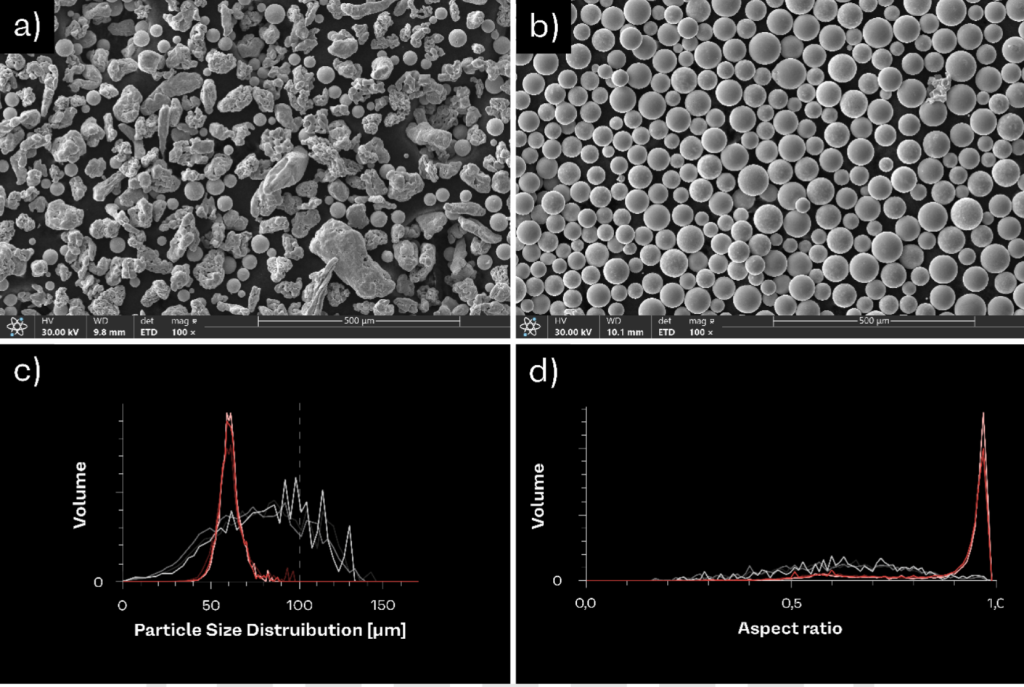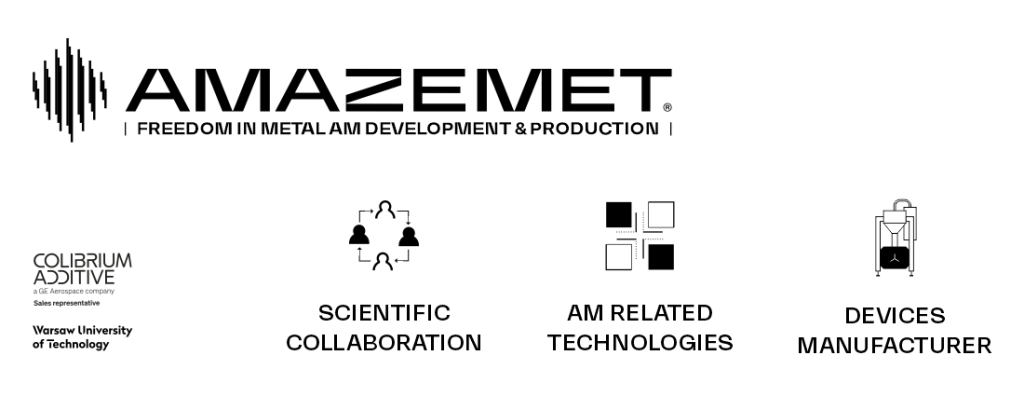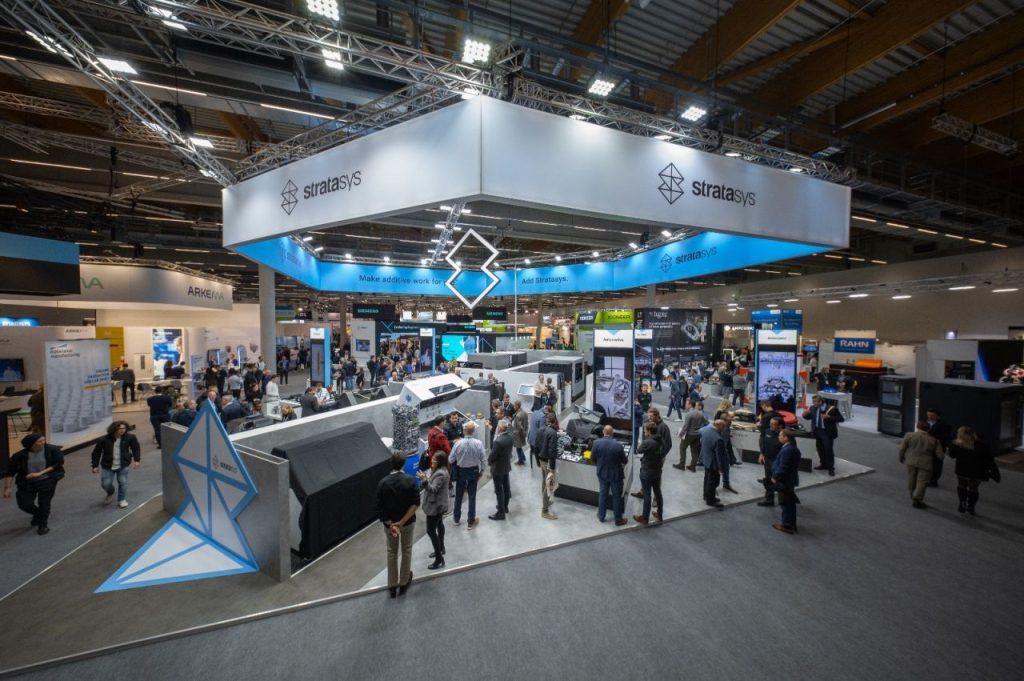AMAZEMET, a Warsaw-based company, unveiled its innovative Powder2Powder (P2P) atomization system at Formnext 2024. This new system offers a versatile solution for recycling metal powders and producing custom pre-alloy powders directly from existing powder feedstock, marking a significant advancement in sustainable metal powder production for the 3D printing industry.
The Powder2Powder system integrates plasma processing with ultrasonic atomization, transforming irregular or oversized particles into highly spherical, satellite-free powders optimized for various 3D printing techniques such as Laser Powder Bed Fusion (LPBF), Directed Energy Deposition (DED), and Electron Beam Melting (EBM). Unlike conventional plasma spheroidization methods, the P2P technology allows powder size to remain independent of the initial feedstock. This capability makes it the only technology currently capable of directly atomizing pulverized titanium (Ti) feedstock, setting a new benchmark in powder processing, according to the company.


Extensive trials with over 200 μm oversized and irregular Ti alloy powders demonstrated the system’s exceptional performance. Operating at a frequency of 40 kHz, the P2P system consistently achieved a powder morphology with an aspect ratio (D50) exceeding 0.95 and a precise particle size distribution (PSD), producing powders with D90 below 80 μm and yielding particles under 63 μm at or above 80%. Approximately 97% of the resulting powder meets the stringent requirements for additive manufacturing processes.
Beyond recycling, the P2P system excels in processing blends of elemental powders to create pre-alloyed materials with precise chemical compositions. This feature is invaluable for both research and industrial applications, allowing for the rapid development of new alloys without the need for extensive preprocessing, electrode casting, or wire drawing. Tests with Ti and 10% wt. Mo elemental powders confirmed the formation of homogeneous alloy powders, demonstrating the system’s versatility and efficiency.
Łukasz Żrodowski, inventor and CEO of AMAZEMET, stated, “The Powder2Powder system goes beyond recycling. It gives manufacturers the ability to customize powder compositions, improve powder sphericity, and optimize particle size distribution, solving critical issues in the additive manufacturing industry. We showcased how it enhances the efficiency and sustainability of powder-based manufacturing at Formnext 2024.”


Industry Advances in 3D Printing Materials
At the same event, PowderMonkeys, a brand of Launhardt GmbH specializing in polymer powders for powder bed fusion (PBF) processes, introduced two advanced materials: Monkey SiPA12 and Monkey RePA12 50-8 GB. Established in 2021, PowderMonkeys supplies materials compatible with selective laser sintering (SLS) and high-speed sintering (HSS) platforms. Monkey SiPA12 is engineered for Sintratec machines, offering high mechanical strength and reduced waste, while Monkey RePA12 50-8 GB incorporates glass beads to enhance tensile strength and thermal stability, providing a glossy finish ideal for applications requiring both mechanical resilience and aesthetic quality.
Stratasys, a leading 3D printer manufacturer, also presented SAF ReLife, a solution that repurposes waste PA12 powder into 3D printed parts. Supported by a Life Cycle Assessment from Fraunhofer IPA, SAF ReLife reduces the carbon footprint of 3D printing by up to 89%. This platform leverages Stratasys’ H350 powder bed fusion 3D printer to produce functional parts from reclaimed powder, enhancing material efficiency and supporting the circular economy by converting waste into high-quality products.


Your voice matters in the 2024 3D Printing Industry Awards. Vote Now!
What will the future of 3D printing look like?
Which recent trends are driving the 3D printing industry, as highlighted by experts?
Subscribe to the 3D Printing Industry newsletter to stay updated with the latest news and insights.
Stay connected with the latest in 3D printing by following us on Twitter and Facebook, and don’t forget to subscribe to the 3D Printing Industry YouTube channel for more exclusive content.
Featured image shows atomization of TiMo alloy using Powder2Powder technology. Image via AMAZEMET.


